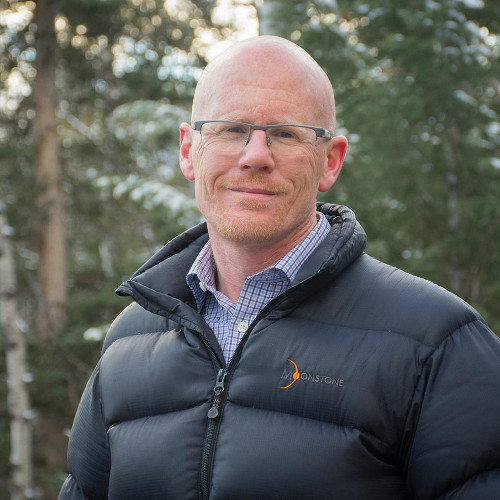Conversations around the Water Table with Project Blue Thumb (Part One)
Water and headwaters as cultural identity
By Amy Spark
Welcome to our inaugural post for Conversations around the Water Table, a six-part interview series led by the Project Blue Thumb Lab.
Project Blue Thumb is a multi-stakeholder social lab co-convened by the Red Deer River Watershed Alliance and Alberta Ecotrust Foundation that takes a whole system approach to protecting water quality in the Red Deer River watershed. Building on the work of our current members, the PBT organizing team reached out to 13 multi-sector practitioners to hear their thoughts about the future of water in Alberta and potential directions. This post provides a snapshot from a few of our interviews relating to water and cultural identity.
Our identity is often defined by a photograph or official document. We are known by our drivers’ licenses, passports, birthdays, eye colour, or height. We’re identified by our fingerprints, our retinas, and our social media profile. We’re acknowledged as non-robots by Captcha tests on websites. But how does water relate to our identity? Specifically, our cultural identity? What does it mean to be ‘Albertan’, while still recognizing our inherent diversity?
What we all have in common is our dependence on our headwaters: the origins of our rivers and streams. These mountainous regions act as reservoirs, providing water throughout the summer as snowpack melts. Yet, according to Stephen Legault, Program Director with Yellowstone to Yukon (Y2Y), there’s more to this story. “Albertans’ cultural identity is wrapped up in conservation and protection of these headwaters” says Stephen. Not only do these regions provide us with water, they provide us with the backdrop of our lives. We hike these hills with our families, decorate our provincial shield with their shapes, and take pride in the wildlife that call these regions home. Stephen elaborates on how this cultural identity has shifted:
“This province is growing up… what Albertans care about has evolved or matured, not necessarily changed. We’re shifting away from the ‘wild west’ mentality to a more sophisticated understanding of our relationship with landscape and sense of place.”

Stephen Legault
This place-attachment may be widespread, but that doesn’t mean it’s consistent. Most of us have unique relationships with the natural landscape – land means something different to each of us. It could signify security, freedom, employment, recreation, peace, or excitement. It could mean different things at various stages of our life. These differences – both between people and within people – can manifest as contentious land-use discussions or disagreements. This is the dance: striking a balance amid our similar cultural values while recognizing our divergent beliefs too. Kim Sturgess, CEO of Alberta WaterSMART offers her thoughts on finding this tricky balance:
“Water is personal. Water is part of childhood memories, unforgettable moments, or times we’d rather forget through disasters like flood or drought… it’s important to understand how people’s values of water are formed.”

Kim Sturgess
Human geographers are well aware of this intricate connection between place and memory. Both Casey (1987) and Pile (2002) point out that memory is hard to form without a tangible space to tie it to. Furthermore, a place is hard to inhabit without remembering what previously happened there. For example, when thinking back on our earliest memories, one may automatically imagine their childhood home. And if you get the chance to actually visit that home – well, the memories will start flooding back.
Perhaps Alberta’s headwaters are similar. It’s hard to imagine an Alberta without the waters that make it special, and it’s hard to think of a clear glacial stream without conjuring thoughts of Alberta’s mountains. Even harder to forget are all the memories we have formed with these waters along the way.
As Stephen says, “Protecting our watersheds is about protecting our identity.” Pragmatically, Hilary Young (Program Coordinator with Y2Y) adds: “Maintaining and restoring natural amenity landscapes are key to southern Alberta’s businesses and people.”

Hilary Young
So what does this mean for the future of water in Alberta? It means protecting our water is not just about water security or healthy wetlands. Protecting water safeguards our memories and identities as well. Conversations around water need to include more than just facts and data. These conversations come alive through storytelling, shared memories, and a recognition of different value sets. Most importantly, these insights point to the fact that water can act as a unifying force. Yes, we all need water to survive. But we also need water to thrive.
These insights helped us at Project Blue Thumb to understand the importance of factors like identify, values, and narratives for the future of water in Alberta. We’re excited to continue to incorporate them into our work.
Check out our next installment of Conservations around the Water Table to be published on May 9 as we continue to examine these diverse landscape relationships. Shannon Frank from the Oldman Watershed Council will shed some light on the newest (re)invention hitting the water world…
Curious about the project? See the Project Blue Thumb blog for information on our interview series, or join in the conversation on Twitter: @BlueThumbLab #ABwater.
Sources:
Casey, E. (1987) Remembering: A Phenomenological Study. Bloomington: Indiana University Press.
Pile, S. (2002) Memory and the City. In Campbell, J. and Harbord, J. (eds.) Temporalities, Autobiography and Everyday Life. Manchester: Manchester University Press.
